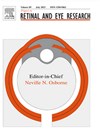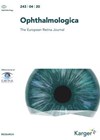
Journal Reviews
Detecting glaucoma with only OCT
In this review article, the authors describe a probability model based upon only OCT to detect glaucoma. They explain how normal anatomical variation can lead to false positives and applying a model to account for this improves specificity. The application...
Retinal changes prior to hydroxychloroquine toxicity
In this retrospective longitudinal study, the authors examined changes in retinal layer thickness in patients taking hydroxychloroquine without evidence of retinopathy. Patients were drawn from a hydroxychloroquine screening clinic and required at least two OCT scans, at least one year...
OCTA in geographic atrophy
In this article the authors aim to give an overview of the current literature concerning the application of OCT-A in geographic atrophy (GA). GA is a disease characterised by loss of outer retinal layers including photoreceptors, degeneration of the retinal...
Assessment of retinal capillary VD and FAZ area in CSC using OCTA
The authors aim to report a cross-sectional, case controlled study, the purpose of which was to access the retinal capillary vessel density (VD) and foveal avascular zone (FAZ) area in acute and chronic central serous chorioretinopathy (CSC) patients compared to...







